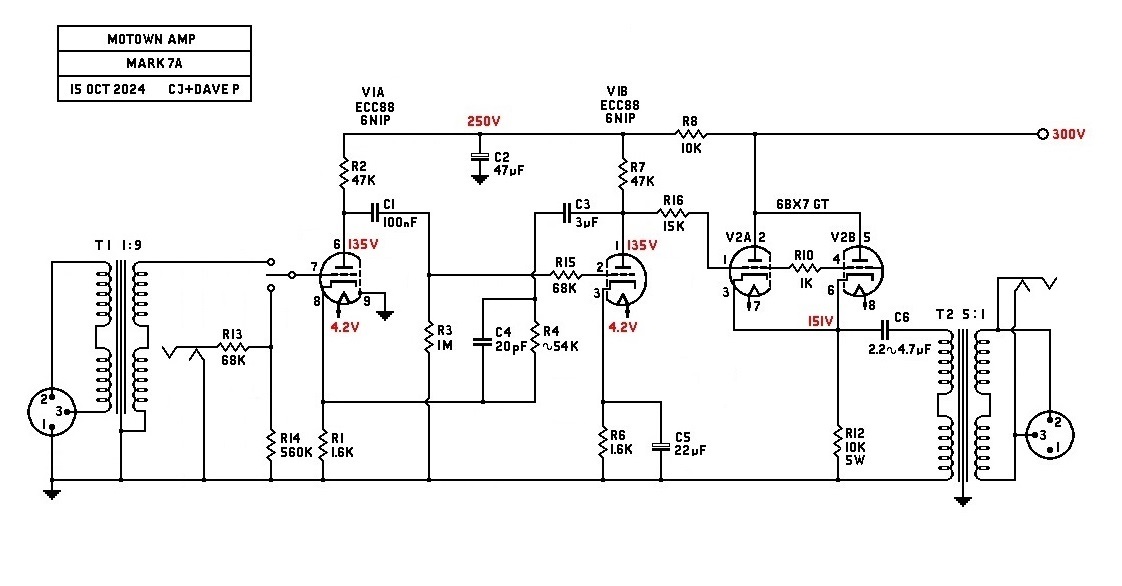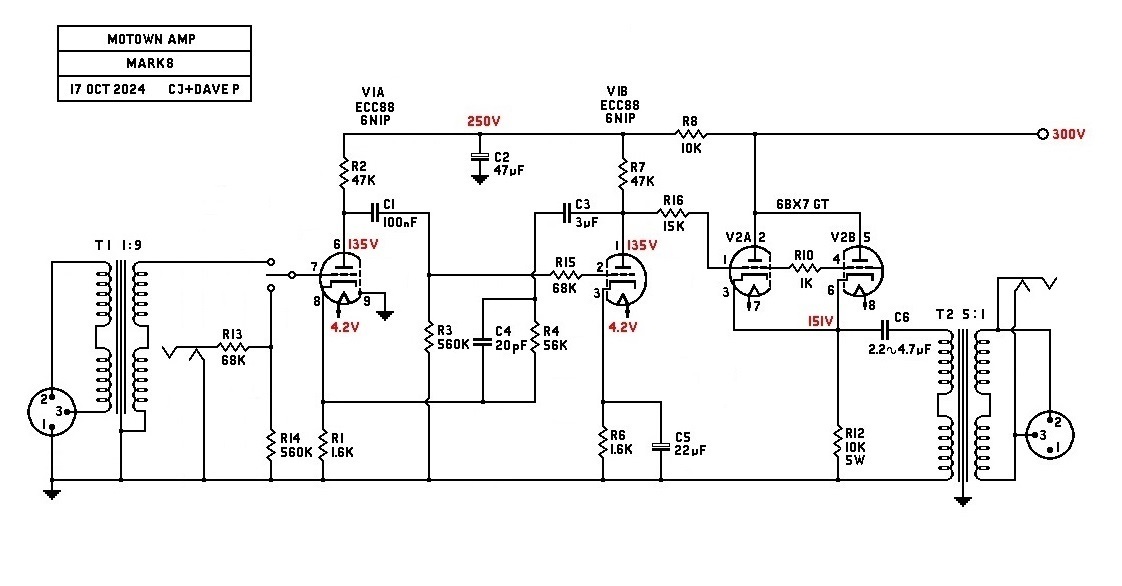CJ
Well-known member
Dave there us a 68K on both grids of the 6N1P and a 15K on the 6BX7 and a 20 pf dogbone cap on the f/b resistor but a ceramic would work just as well.
A Jensen 4:1 output would probably sound awesome in this circuit.
A Jensen 4:1 output would probably sound awesome in this circuit.
Last edited:





























![Soldering Iron Kit, 120W LED Digital Advanced Solder Iron Soldering Gun kit, 110V Welding Tools, Smart Temperature Control [356℉-932℉], Extra 5pcs Tips, Auto Sleep, Temp Calibration, Orange](https://m.media-amazon.com/images/I/51sFKu9SdeL._SL500_.jpg)









